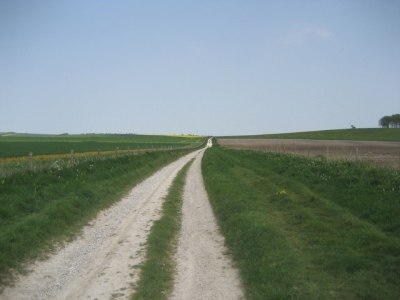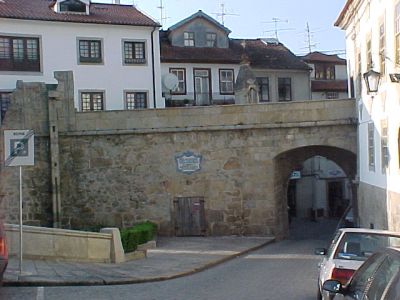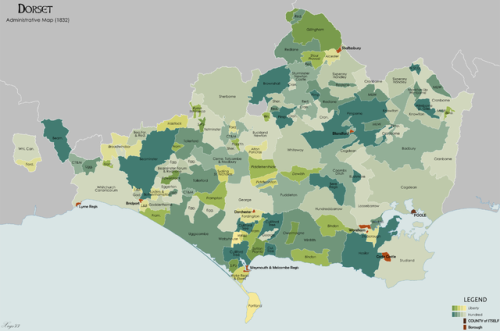Returning to the backlog on reporting what others think about the Middle Ages finds me now at the second day of the International Medieval Congress 2014, on 8th July 2014, and faced with some hard choices between sessions. In the end, I chose this one because I knew one of the people in it, had reviewed the work of another and Wendy Davies was moderating, and this is what I got.
515. On The Fringes of Empire: local and supra-local identities beyond the Carolingian realm, I
- Frode Iversen, “Impact of Empires: the Scandinavian fringe AD 200-1300”.
- Letty Ten Harkel, “On the Edge of Empire: early medieval identities on Walcheren (the Netherlands)”.
- Margarita Fernández Mier, “Peasant Communities and Distant Elites in Early Medieval Asturias”.
As you can see, the unifying thread here was Carolingian periphery, but this didn’t always make it through. Dr Iversen gave a very rapid run-through of significant bits of the settlement history of Norway, and when he began to speak of how urbanisation fitted to a new structure as if he’d described change, I realised I must have missed something. I also struggled with Dr Fernández’s paper, although the sites she was talking about, rural sites whose material culture might tell us something about the links from elite to peasants in early medieval Asturias, were very interesting-looking, but as it turned out known much more from place-names than anything more material. She drew a picture of competing local identities visible in funerary archæology and developing church sites that would be familiar in Anglo-Saxon England, however, and looked worth chasing in more places. Both of these papers had a tendency to argue for connection between sites that seemed to me from their maps to be a good distance from each other, in the former case up to 50 km, however, and I wasn’t sure that either case had been demonstrated.

Middelburg in Walcheren, one of those cases where it could hardly be clearer where the original settlement was and how the church was inside it[Edit: although I am informed by Dr Ten Harkel herself that the church inside the ring is actually the Nieuwekerk, which being twelfth-century is actually the newest of the three at the settlement. The other two were outside the walls, which is in many ways a more ancient way of arranging things…]
Nonetheless, my interest was piqued enough to come back for more once caffeinated, as follows.
615. The Fringes of Empire: local and supra-local identities beyond the Carolingian realm, II
- Alex Langlands, “Empire and Infrastructure: the case of Wessex in the ninth and tenth centuries”.
- Iñaki Martín Viso, “Local Communities and Kingship South of the Duero, 9th-11th Centuries”.
- Álvaro Carvahal Castro, “The Astur-Leonese Power and The Localities: changing collective spaces (9th-10th centuries)”.
This session played a lot closer to my usual interests. Dr Langlands was chasing a word, ‘herepath’, literally ‘army-path’ but using a word for army that usually means raiders’ bands, not the army you serve in, and one would think that a path wide enough to carry an army might in fact be a road anyway, so it’s a funny term. Most of the references are in Anglo-Saxon charters, and while Dr Langlands argued convincingly that these paths appear mainly as links between sites rather than routes as such (though now I write that I am no longer seeing the difference) I wasn’t really sure that we could be sure they were anything to do with either roads, bridges or army-service, all of which had come into the argument.

Wikimedia Commons believes this to be an actual herepath, near Avebury, and who am I to say different? “Herepath Avebury England” by Chris Heaton. Licensed under CC BY-SA 2.0 via Wikimedia Commons.
Professor Martín then took us into the almost-unknown territory of the southern Duero valley in the centuries either side of the year 1000. Somewhere in this period, and with setbacks due to the final, red giant phase of Muslim rule in Córdoba, the kings of Asturias-León acquired a dominant control in this area and most of what we have is to figure it out with is archæology. With it, Professor Martín depicted a process by which the king used military service, and his ability to demand it (or possibly to convince local élites to join in with it) to elbow those élites into a position of obligation to him. He tied this to a particular sort of fortress with square towers and sloping walls that seems to be Andalusi workmanship but in a zone that was never under Andalusi control; I myself thought that that was a very unsafe thing to say, but the general proposition could fit round what I think happens in such zones.

A location of military service in Viseu, one of Dr Martín’s example sites, even if that service would have been a bit later: this is the Porta dos Cavaleiros. “Nt-Viseu-Porta dos Cavaleiros“. Licensed under Public Domain via Wikimedia Commons.
Lastly Álvaro, whom in this session I realised I had known while we were both at Oxford but never quite fixed his name in my head, looked for those same local élites a bit closer into the Asturo-Leonese core where we have charters to play with, and found them manifest in assemblies, often as small power groups within likewise small communities, the kind of people who make deals for their communities and so on, who must have existed in these zones before our sources, generated by the making of those kinds of links, show them to us.1

The memorial to the founders of Sant Andreu de Tona on the Turó del Castell de Tona, one group of ‘local élites’ we can name
I’ve gone into some detail with this because these questions, of why people on the edge of polities decide to join in with them, are meat and drink to me and my frontier interests, and as Charles Insley rightly pointed out in discussion, the crucial questions here are ones of agency: who makes anyone in these situations do stuff? All three speakers offered answers, although Professor Martín’s was mostly a judicious refusal to guess where there was no evidence. Only Álvaro seemed to me to have a clear eye on what sort of people these local élites actually were, however, a problem we’ve discussed before, and I offered the answer I even then had in press and alas still do, to wit that we can at least see them in church consecrations, leading their communities.2 Alas, this is a category of evidence that only exists in Catalonia, so Professor Martín remained obdurate, only suggesting that the fueros of the twelfth century indeed suggest some continuities that we can’t, all the same, prove. He’s right, of course!
Anyway, that was all fun and put me back on some Castilian radars I think, but there wasn’t much time to capitalise on it as there was another lunchtime keynote lecture, and again personal and institutional loyalties drove me to attend, as well as the expectation that it would be very interesting, as indeed it was, which I tried not to spoil by noises of eating my packed lunch again. (I’m glad they dropped this arrangement this year.)
699. Keynote Lecture 2014
- Naomi Standen, “A Forgotten Eurasian Empire: the Liao dynasty, 907-1125”.

The Fugong Temple Pagoda, built in 1056 by Emperor Daozong of Liao. By Gisling (Own work) [GFDL or CC BY-SA 4.0-3.0-2.5-2.0-1.0], via Wikimedia Commons.
- Naomi introduced what was for many people an unfamiliar area by setting up the familiar dichotomy of civilisation versus nomads, a way of classifying society probably familiar to most people in the West from
- but very common in Chinese sources too, especially when the Mongols are at issue. On one side, bureaucracy, tax, education, cities, a professional class and so on, on the other personal hierarchy, tribute and plunder, and a life for which warriors trained in the saddle, you know the deal. Naomi then pitched her subject area of the moment,
- , as a third way that breaks this dichotomy, using archæology wherever possible to vie with the impression of the Liao given by Chinese writers who were determined to put them, and their cities too, in the nomads box. But they didn’t fit either, Naomi argued: they had a structured élite but it was maintained by family succession, they had a trade network which we can see in ceramics finds along routeways but no sign that the state tapped it, the empire was stable and not expansionist and held to long treaties with inner China, the citizens were called nomads but lived in cities, and people in the empire invested hugely in religious patronage. It also comprised more than two hundred ‘peoples’ as the Chinese geographers counted it but made no legal distinction between them. It had not borrowed all this from central China or been civilised by contact, or so Naomi claimed; it was a different sort of empire. I’m sure that some might contend with this or find it idealistic but the thought experiment of substituting a trinary for one of the binaries with which
Western historiography is famously dogged
- is probably worthwhile even so, and the detail is meanwhile still coming together as the pottery series and the architectural history of the zone get worked out by
- , so we will either way know more before long.
Thus refreshed both physically and mentally, I headed some of the way back west.
719. Were the Umayyad Caliphates Empires? I
- Andrew Marsham, “In What Respects Was the Umayyad Empire an Empire?”
- Harry Munt, “The Umayyad Imperial Rationale and Hijazi Cities”.
- Hannah-Lena Hagemann, “Rulers and Rebels: Kharijite Islamic resistance to Umayyad authority in early Islamic historiography”.
This was an interesting and tightly-focused session, even if again about the category of ’empire’ as much as the actual materials of the presenter’s study. Dr Marsham invoked the work of Michael Mann (which I should know better3) and used its categories to argue that the early Islamic caliphate, with its emphasis on dynastic succession, its religious qualities attached to state office, its structured hierarchy of that office and its tax system, was as much an empire as the late Roman one it replaced, which given the inheritance perhaps shouldn’t be surprising but still often is. The other two papers focused on opposition to the Umayyad Caliphs, but from two different sources, in the case of Dr Munt from the cities in the Hijaz area of modern Saudi Arabia and most notably Medina, whose ruling class never aimed at separation from the state but frequently rebelled to achieve better inclusion in it. In the case of Dr Hagemann, however, the rebellion came from the Kharijites, a sect of early Islam who declared, according largely to their opponents, that there were no legitimate successors to the Prophet and therefore rejected all attempts at command in his name; she pointed out that even some of those enemies still used them, in pleasingly Roman style, as a foil for criticism of the Umayyad régime where those writers felt it had gone so far wrong as almost to justify the reaction of the supposed ‘heretics’. It all gelled very nicely and in discussion I witnessed, for the only time I can remember, someone successfully defend their point against a question about the economy from Hugh Kennedy, no small achievement.
This was all grand, therefore, but I sorely needed caffeine by now, and hunting in the bookfair, always dangerous, found myself deep in conversation with Julio Escalona about the need to get Castilian and Catalan scholars around the same table. Thus it was that I was late for the next session, nothing to do with books honest…
812. Empire and the Law
- Vicky Melechson, “From Piety to the Death Penalty: new capital crimes in the Carolingian Empire”.
- Graham Barrett, “Legislation and its Afterlife in Early Medieval Europe”.
- Sharon Fischlowitz, “Laws of an Empire: after the Romans, what were the leges barbarorum?”
So I was late for the start of Ms Melechson’s paper but caught her point quickly, it being that while the Romans really only imposed the death penalty for crimes against the emperor, and the various barbarian laws attempted to divert people from vengeance for murder to compensation payments, nonetheless the influence of the Old Testament in the way the Carolingian kings presented themselves made capital punishment an appropriately Biblical step for increasingly many things. There are arguments one could have with several parts of that but the basic argument seemed well-founded. I got rather less out of Dr Fischlowitz’s paper, which was given largely from the perspective of teaching modern law using the ‘barbarian’ laws as examples. It sounded as if she was having great fun doing it but the paper nonetheless really only told us what she found the most striking bits of late Roman and Frankish law.

The opening of the text of a manuscript of the Breviary of Alaric, one of the earliest ‘barbarian’ collections of Roman law (Paris, Bibliothèque Nationale de France, MS Latin 4404, fo. 2v)
But it was all worthwhile for Graham’s paper, which was him absolutely on form: he was arguing that although we know and read late Roman and early medieval law as codes, big books of more or less organised and collected legislation, it could almost never have been used like that, especially not the huge late Roman codices. It was also hardly ever issued like that: the late Roman codes explicitly compile decisions, largely reactive rather than proactive, fragmented and disparate, from centuries apart by many different emperors, the Visigothic Law does some of the same work and citations like this also appear in the Salic and Burgundian laws. What this means is that capitulary legislation like that of the Carolingians would actually have been the primary form of law, and the codes we think of as definitive only its secondary collection, which could have very little to do with law as it would have been used, as dockets and loose gatherings of relevant edicts, rescripts and proclamations. This was one of those papers that seemed to make everything very obvious which before had not been, and I hope as with almost all of Graham’s work that we get to see it in print before very long. It provoked a lot of discussion, also, with Paul Hyams wisely pointing out that law that got written relates only to the problems that couldn’t be solved more locally, and is therefore always outstanding. There was also some discussion about law that gets made as part of a treaty process, to which Dr Fischlowitz offered the Lex Romana Burgundionum, intended to regulate the relations of the Romans of what is now Burgundy to the newly-arrived military group after whom it got named, and I proffered the Treaty of Alfred and Guthrum, after which, probably wisely, the moderator drew the session quickly to a close.
Again I can’t remember how the evening went, but the day had been pretty full and this post is certainly full enough, so I shall leave it here for now and pick up after a couple of smaller posts that don’t take me days to write. I’m sure you’re already looking forward to it…
1. On such groups see now Robert Portass, “Rethinking the ‘small worlds’ of tenth-century Galicia” in Studia Historica: Historia Medieval Vol. 31 (Salamanca 2013), pp. 83-103, online here.
2. Few better statements of this line of thought are available for Spain than Álvaro’s own “Superar la frontera: mecanismos de integración territorial entre el Cea y el Pisuerga en el siglo X” in Anuario de Estudios Medievales Vol. 42 (Madrid 2012), pp. 601-628, DOI: 10.3989/aem.2012.42.2.08, but I hope soon to be adding to it in “Engaging Élites: Counts, Capital and Frontier Communities in the Ninth and Tenth Centuries, in Catalonia and Elsewhere” in Networks and Neighbours Vol. 2 (Leeds forthcoming for 2014), pp. 202-230, preprint online here.
3. Presumably most obviously M. Mann, The Sources of Social Power Volume 1: a History of Power from the Beginning to AD 1760 (Cambridge 1986)? I wonder if this will supply something I found myself in want of in a dissertation supervision a few weeks ago, too, a cite for the conceptual differentiation of ‘intensive’ and ‘extensive’ lordship. If anyone reading happens to have one handy, however, I’d be glad of it!






